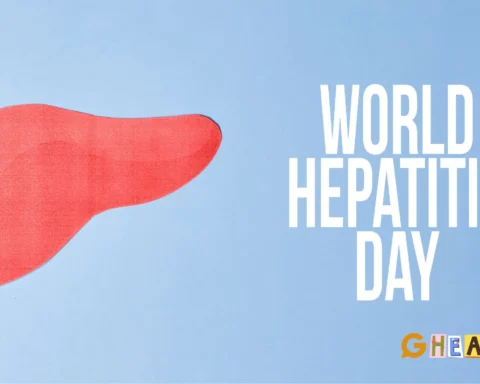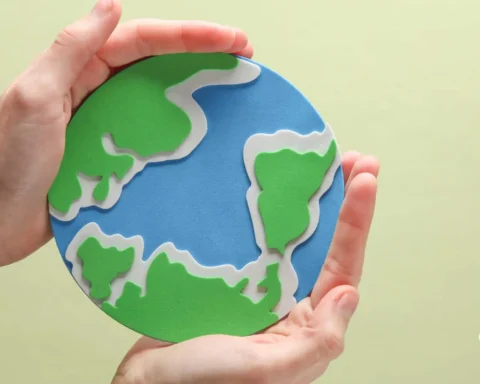Will you believe us if we tell you that globally, there have been 7348 climate-related disasters, 23000 deaths, and 50 million people affected? This is a statistic from the year 2021 in November.
Some global facts for 2023 include:
- 10% of top-income earners are responsible for nearly half of total emissions.
- The bottom 50% of earners contribute only 12% of emissions.
- Based on current policies, we are on a path to 3 degrees Celsius warming (currently close to 1.2 degrees Celsius)
- To achieve the Paris Agreement goals, we must limit emissions in 2030 by at least 28-42%.
- All countries have development opportunities in alignment with climate goals.
- Short-term, deep emission cuts have to be undertaken.
- Long-term, this must be combined with the removal of carbon dioxide.
Table of Contents
What is the Climate Crisis?
The climate crisis refers to the urgent environmental challenges resulting from human activities that contribute to global climate change. It is characterised by the warming of the Earth's atmosphere due to increased greenhouse gas emissions. The consequences include rising temperatures, extreme weather events, disruptions to ecosystems, and threats to biodiversity. Addressing the crisis requires global cooperation to reduce emissions and transition to sustainable energy sources.
Image by the author
How Did Climate Change Begin?
The climate crisis is the threat of global warming to humanity and the planet, caused by human activities that emit greenhouse gases. The burning of fossil fuels like coal and oil has increased the concentration of atmospheric carbon dioxide, which is the largest contributor to global warming. The consequences of climate change are serious and affect many aspects of our lives. It is crucial to take immediate action to counter climate change and adapt to a warming world. In the late 19th century, scientists first argued that human emissions of greenhouse gases could change Earth’s energy balance and climate, and by the 1960s, the evidence for the warming effect of carbon dioxide gas became increasingly convincing.
Greenhouse Effect (More Greenhouse gases = A Warmer Earth)
Above (Left) The Earth’s surface, warmed by the sun, radiates heat into the atmosphere. Greenhouse gases like carbon dioxide absorb some heat and then radiate to space (A). Some heat makes its way into space directly (B). Greenhouse gases absorb some heat and then radiate back towards the Earth’s surface (C). (Right) With more carbon dioxide in the atmosphere later this century, more heat will be stopped by greenhouse gases, warming the planet. (Image: L.S.Gardiner/UCAR)
Industrial Revolution and Climate Change
The Industrial Revolution, which began in the mid-19th century, shaped the life of humanity as a whole. Mechanisation initiated economic progress and, at the same time, started polluting the natural environment, our only means of sustenance. As of 2023, it has taken over a century to understand the consequences of rapid industrialisation without much forethought. In the first half of the 1900s, a handful of scientists predicted a warm world, but they were silenced by industrialists for greedy gains.
Can we not learn a few lessons and avoid repeating previous mistakes regarding rapid industrialization without forethought? Source: Environmental Protection Agency, US (epa.gov)
Indicators of a Warming World
The warming can be seen and felt by one or more of the indicators shown in the image. Which ones have you noticed in your area?
What is the Status?
The climate crisis is urgent and requires immediate action. The world is experiencing devastating impacts such as record-breaking heat, floods, storms, droughts, and wildfires. The Intergovernmental Panel on Climate Change (IPCC) has warned that rising greenhouse gas emissions are pushing the world to the brink of irrevocable damage. The goal of limiting global warming to 1.5 degrees Celsius is not on track, and countries must commit to a decisive decade of climate action. The urgency of the situation is highlighted by the warmest year on record in 2023 and the limited time left to limit global warming to 1.5°C. The IPCC has called for massive fast-tracking of climate efforts by every country and sector to avoid the worst effects of climate change.
Guardian graphic. Source: Our World in Data
Source: NOAA (National Oceanic and Atmospheric Administration, US)
Guardian graphic (Source: Copernicus)
Some Examples with Evidence
Climate change refers to long-term shifts in temperatures and weather patterns caused by human activities, primarily the emission of greenhouse gases. It leads to rising global temperatures, melting sea ice, sea level rise, extreme weather events, altered ecosystems, and impacts on human health. Climate change has wide-ranging consequences for ecosystems, agriculture, infrastructure, and societies.
Global Temperature
The highest recorded temperature in thousands of years was in September 2023.
Source: NOAA (National Oceanic and Atmospheric Administration, US)
Greenland Mass Variation
An indicator considered by scientific groups is the ice mass variation in Greenland.
Source: (NASA) National Aeronautics and Space Administration (nasa.gov)
Rising Sea Levels
The prediction is that by 2100, sea level rise will be 1000mm (1 meter). This varies from city to city. What is to be noted is that currently, the population of the world lives in urban areas. The migration from rural to urban areas is likely to continue for the coming decades if appropriate actions are not taken. This mass migration will burden already congested cities in terms of population, infrastructure, and other aspects related to living a decent life.
Combating the Climate Crisis: The Roadmap
Various solutions to the climate crisis exist at different levels, including individual, national, and international actions. These solutions include transitioning to renewable energy, improving energy efficiency, adopting sustainable agriculture and forestry practices, reducing food loss and waste, implementing climate change adaptation and mitigation measures, and fostering international cooperation. It is crucial for individuals, businesses, and governments to collaborate in addressing the climate crisis and reducing greenhouse gas emissions. Immediate action is needed to reduce greenhouse gas emissions and limit global warming. Solutions to address climate change exist at various levels, including individual actions, community initiatives, and global policies. A comprehensive approach involving actions at different levels is necessary to address the climate crisis.
The roadmap to a happy, healthy Earth requires the comprehensive efforts of all global citizens.
(Image by the Author)
What is the Climate Clock?
The Climate Clock (also called the ‘doomsday clock’) is a visual representation that shows the approaching 1.5°C global warming threshold based on current emissions trends. It is updated annually and currently counts down towards late July 2029. The clock raises awareness about climate emergency and encourages global action. The Human Impact Lab hosts it, part of Concordia University, and is supported by various organisations.
A time of unprecedented danger: It is 90 seconds to midnight, 2023 Doomsday Clock Statement, thebulletin.org (Bulletin of the Atomic Scientists)
Which Nations are Taking Action?
Nations are taking action to combat climate change through global efforts and initiatives like the Paris Agreement and the United Nations Sustainable Development Goals. The European Union has set a target of reducing greenhouse gas emissions by at least 55% by 2030, while the United States has rejoined the Paris Agreement and set a goal of reducing greenhouse gas emissions by 50-52% below 2005 levels by 2030. Detailed actions by individual nations can be explored through their national climate policies, commitments, and contributions.
Check out how your country is performing. Have you been contributing or mitigating?
Climate Crisis – Negative News
We have gathered some bad news just to wake up those who live under a rock. Do not worry. There is good news too, but later.
(Image by the Author)
(Image by the Author)
Climate Crisis – Positive News
As promised, here is the good news.
(Image by the Author)
(Image by the Author)
International Efforts
Several international agencies have been making efforts to create awareness as well as take pre-emptive actions. Some of them include:
The Sustainable Development Goals (SDGs) of the United Nations include 17 interconnected goals addressing global challenges like poverty, inequality, climate change, and justice. The SDGs provide a blueprint for a sustainable and inclusive future for all by 2030.
Earth Day (since 1970) is an annual celebration that honours the achievements of the environmental movement and raises awareness of the need to protect Earth's natural resources. It is celebrated worldwide on April 22, or the day of the spring equinox.
Led by the United Nations Environment Program (UNEP), World Environment Day is an annual event celebrated on June 5th since 1973 to promote environmental awareness and action. It is the largest global event for positive environmental impact, with participation from over 143 countries.
Earth Overshoot Day is the date when humanity's resource consumption exceeds Earth's capacity to regenerate those resources for the year. In 2023, it fell on August 2nd. This marks the point when we exhaust nature's budget, leading to an ecological deficit for the rest of the year. The Global Footprint Network leads this initiative, changing the way we measure and manage natural resources.
The Paris Agreement is a legally binding international treaty adopted in 2015. It aims to limit global warming to well below 2°C above pre-industrial levels and encourages efforts to limit the increase to 1.5°C. Countries are required to submit their plans to reduce greenhouse gas emissions and adapt to climate change every five years. The agreement also established the Green Climate Fund to provide financial assistance to developing countries. It is a landmark agreement as it brings all nations together to combat climate change and adapt to its effects.
Additionally, some agencies and organizations put their efforts into the conservation of wildlife. Hence, we have an elephant day, a giraffe day, a tiger day, a bee day, and the like.
Huge efforts are made by scientists in all fields to improve our lives. Some of the new inventions are thin, rollable solar panels, small wind turbines for individual houses, incinerators for houses, carbon capture projects, etc. Besides, some eco-conscious individuals fight all odds to create a difference. Some examples are the cleaning of lakes, the production of fuel from plastic waste, etc.
Viewpoints
We will look into what some important personalities have to say about the climate crisis.
Conclusion
The state of the climate crisis demands urgent attention and collaborative global efforts. Reports from the United Nations and other sources emphasize the severity of the situation, with the 2023 State of Climate Action highlighting the inadequacy of current measures to limit warming to 1.5°C. Political leadership and global cooperation are of utmost importance. People will follow reasonably good policies if they help in the long run. Dialogue between authorities and the public has to be universally followed for all projects.
Despite the grim outlook, there is room for optimism. The climate crisis, while daunting, presents opportunities for global leaders, companies, and individuals to drive positive change. Through concerted efforts, the international community can strive to mitigate the worst outcomes, fostering a resilient and sustainable future for generations to come.
Perhaps this is the legacy you want to leave behind.











[…] – the vibrant greens have surrendered to a cracked wasteland. This isn't the nostalgic ache of time passing; it's the unsettling reality of desertification, a silent thief creeping across our planet, […]
[…] reforms to streamline business processes, reduce bureaucracy, and improve the investment climate, including the National Single Window System […]
[…] climate is as diverse as its rich cultural heritage. Understanding the major factors that shape this vast […]